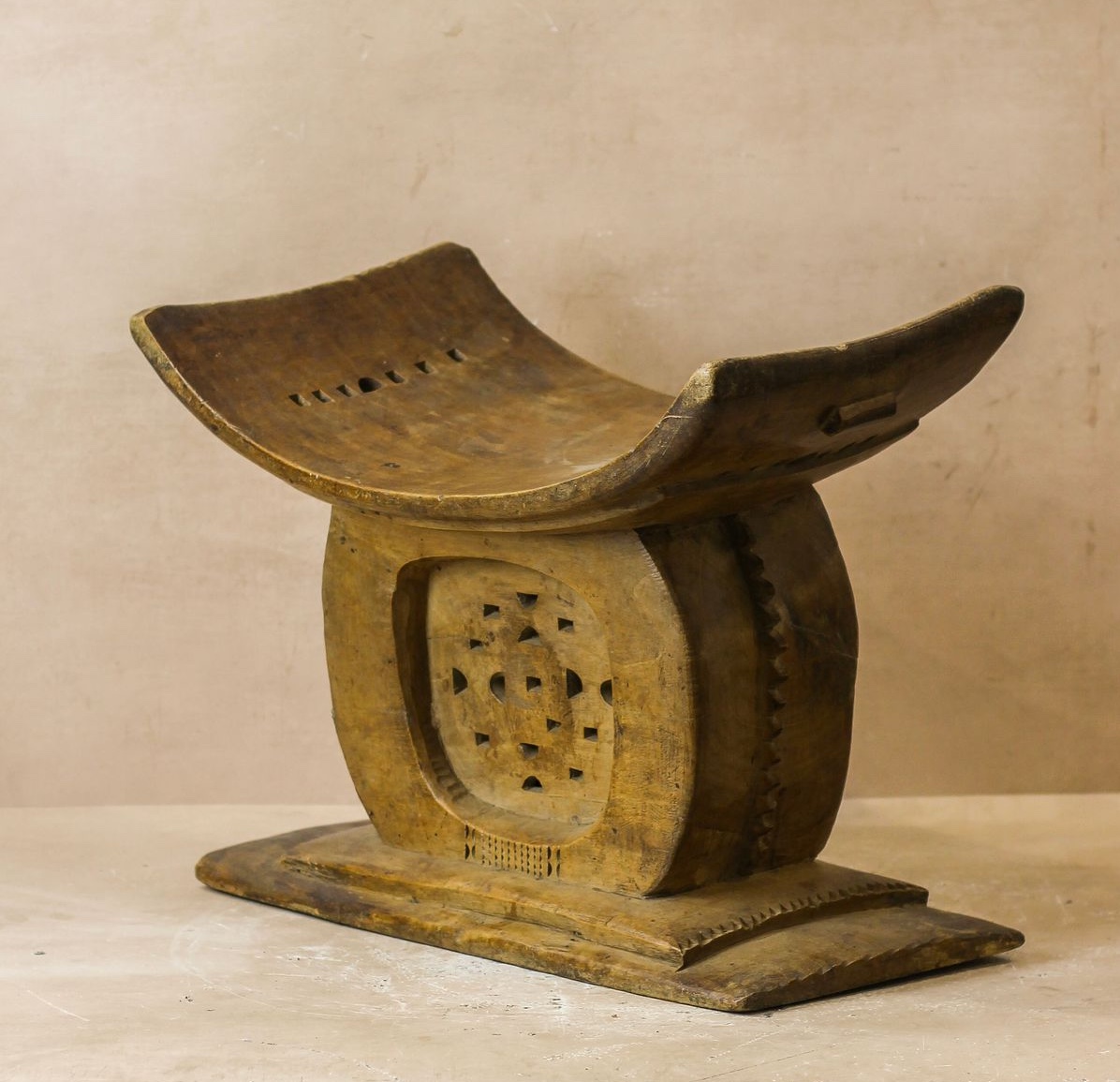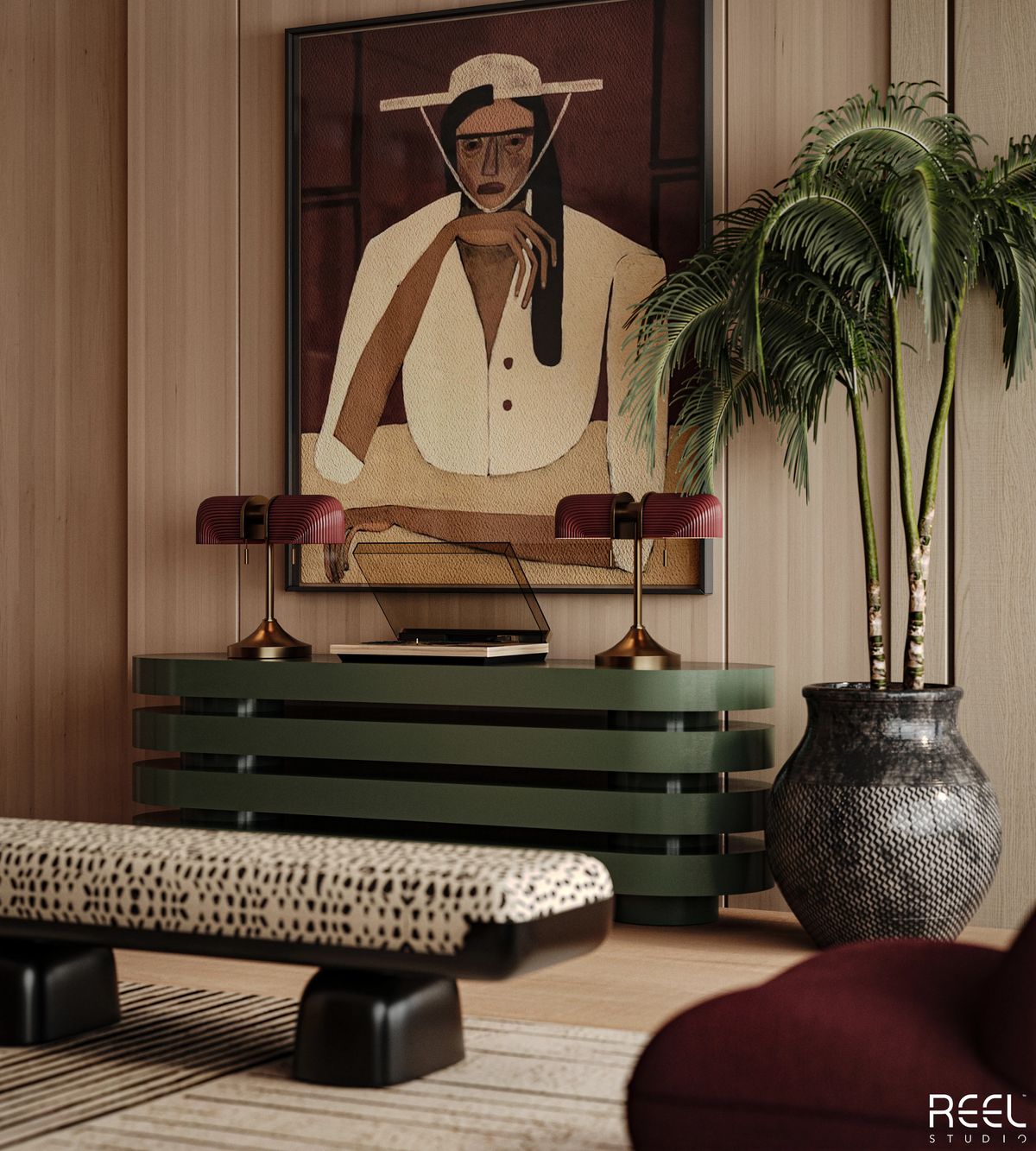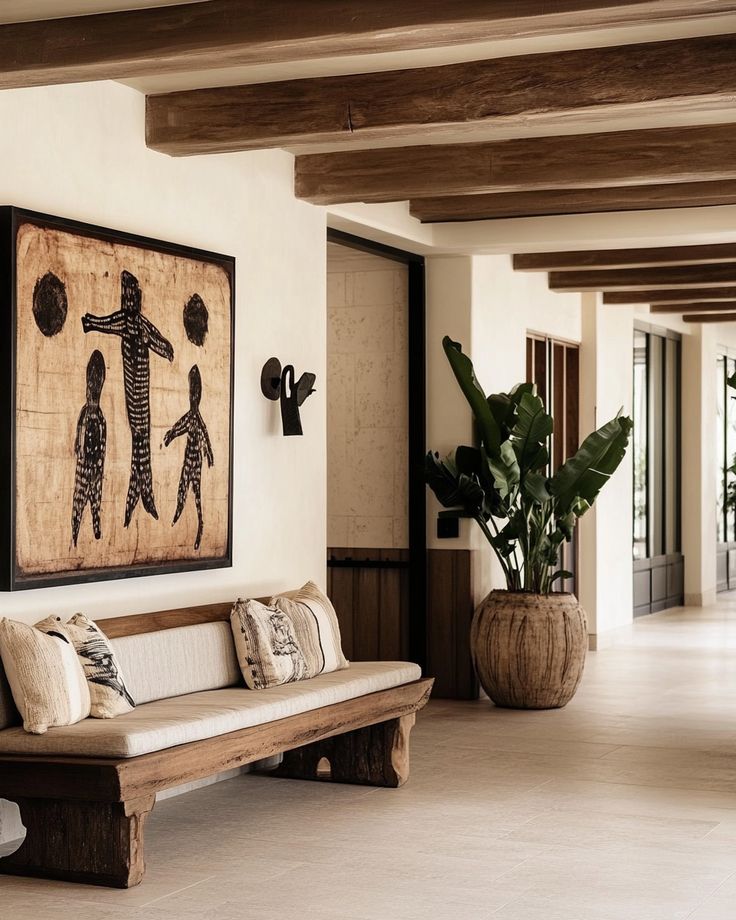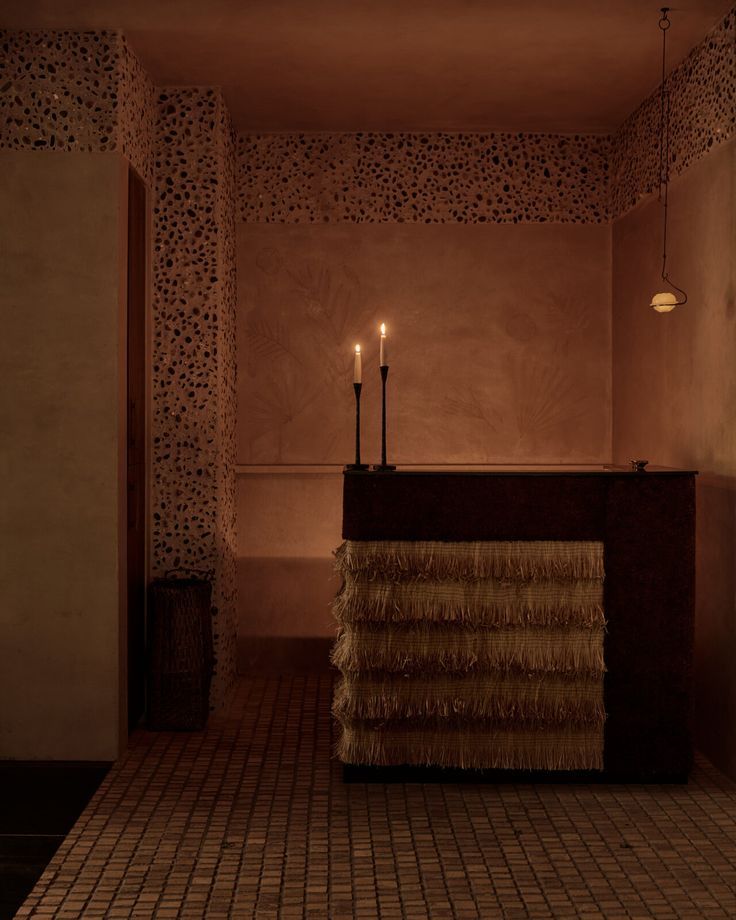
Introduction
For me West African inspired interiors are more than a design trend—they are a celebration of culture, storytelling, and timeless craftsmanship. Rich in symbolism, layered textures, and natural materials, these interiors create spaces that feel warm, personal, and deeply connected to heritage. I talk more about how they inspired me to start my design studio here.
In today’s world, where many homes feel curated by global trends rather than personal stories, West African design offers a refreshing alternative. It blends tradition with modernity, producing interiors that are soulful, sustainable, and strikingly beautiful.
In this article, we’ll explore the key elements of West African inspired interiors, practical ways to bring them into your space, and even how intimate areas like walk-in closets can reflect cultural identity.
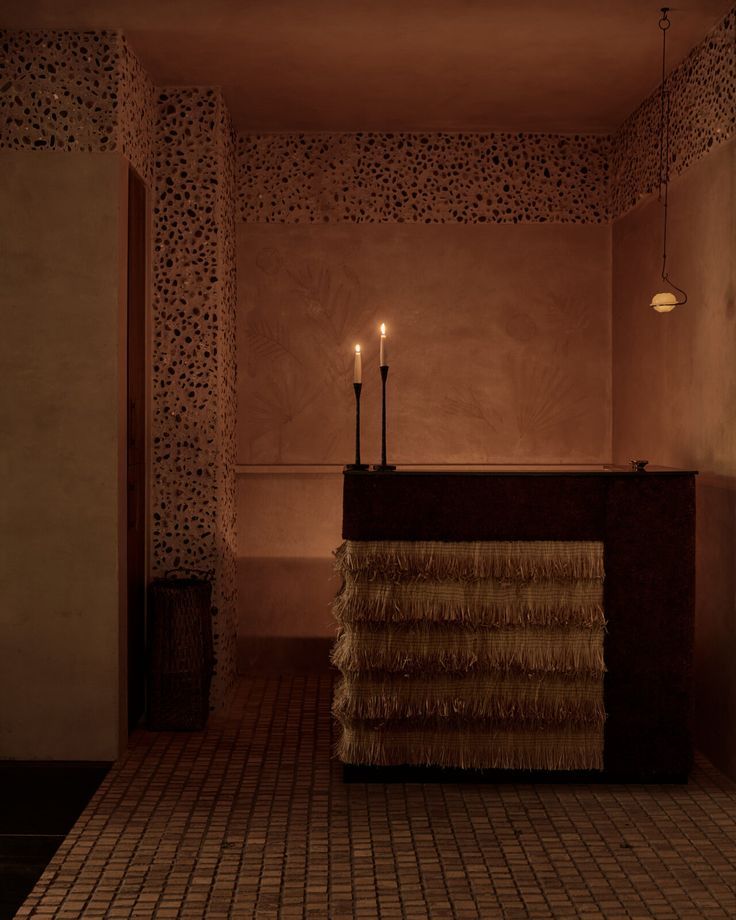
1. The Essence of West African Inspired Interiors
West African interiors are defined by their vibrant colours, symbolic patterns, artisanal craftsmanship, and natural materials. Each design choice carries meaning, rooted in centuries of tradition.
From bold Adinkra symbols of Ghana to handwoven Aso-Oke textiles of Nigeria, every element tells a story. Unlike mass-produced décor, these pieces connect homeowners to heritage while also elevating the aesthetic of modern spaces.
2. Why Choose West African Inspired Design?
- Cultural Connection – Interiors infused with heritage foster belonging and identity.
- Timeless Appeal – Natural textures and artisanal pieces never go out of style.
- Sustainability – Locally sourced materials like timber, clay, and woven fibres support eco-conscious living.
- Emotional Depth – Spaces feel soulful, layered, and full of character.
👉 According to design trend reports, heritage-inspired interiors grew by 27% in global demand in 2024, highlighting a rising appetite for culture-driven design.
3. Key Features of West African Inspired Interiors
1. Natural Materials
Wood, clay, raffia, and stone dominate West African design. Mahogany furniture or woven rattan chairs add warmth and longevity.
2. Bold Colours & Patterns
Expect rich earthy tones—terracotta, ochre, and indigo—paired with striking patterns from Ankara or mud cloth textiles.
3. Symbolism in Décor
Carvings, masks, and motifs often carry ancestral meanings. For example, Yoruba carvings depict themes of spirituality and power.
4. Textiles & Layers
Layering textiles, from hand-dyed fabrics to embroidered throws, creates texture and storytelling.
5. Functional Rituals
Design adapts to lifestyle: spacious dining for communal meals, prayer corners, or courtyards for privacy and ventilation.
4. How to Blend West African Design Into Modern Homes
- Start with Accents – Add mud cloth cushions, carved stools, or woven baskets.
- Play with Colour – Introduce earthy tones to walls or furnishings.
- Statement Furniture – Invest in one artisanal piece, such as a carved credenza.
- Balance Boldness – Mix cultural pieces with clean modern lines to avoid a “museum” feel.
- Personalise It – Use heirlooms or commissioned art to tell your unique story.
5. West African Inspiration in Walk-In Closets
Walk-in closets aren’t usually associated with cultural heritage, but they can become intimate expressions of identity.
- Shelving & Finishes: Use natural hardwood or carved wooden handles.
- Storage Baskets: Replace generic bins with woven raffia or sisal baskets.
- Cultural Backdrops: Line walls with textile-inspired panels or symbolic patterns.
- Luxury Meets Storytelling: Incorporate brass detailing inspired by Benin art or leather pulls crafted by local artisans.
✨ Imagine opening your closet each morning and being surrounded not just by clothes—but by a sense of home, identity, and pride.
6. FAQs About West African Inspired Interiors
Q1: Can West African design work in minimalist spaces?
Yes. Use select pieces like a carved stool or patterned rug to add cultural depth without overwhelming.
Q2: Is it expensive to design with African influences?
It depends. Handcrafted artisanal pieces may cost more, but they are durable and timeless investments.
Q3: How do I keep it modern, not traditional?
Balance bold cultural elements with neutral backdrops, sleek furniture, and modern lighting.
Q4: Can I combine West African with other styles?
Absolutely. Scandinavian-African blends (Scandi-African) are trending, pairing clean lines with earthy tones and textures.
Q5: Where do I start if I’m new to this style?
Begin with textiles—affordable, versatile, and instantly impactful.
Conclusion
West African inspired interiors are more than décor—they are about identity, heritage, and creating homes that tell stories. By weaving together bold colours, natural textures, and symbolic art, you can create a space that feels both luxurious and deeply personal.
Whether it’s through a hand-carved table in your living room, a mud cloth-inspired wall hanging, or even a culturally infused walk-in closet, your interiors can honour your roots while embracing modern comfort.
The beauty of West African design lies in its ability to be both timeless and contemporary—allowing your home to truly feel like yours.
+ view the comments
